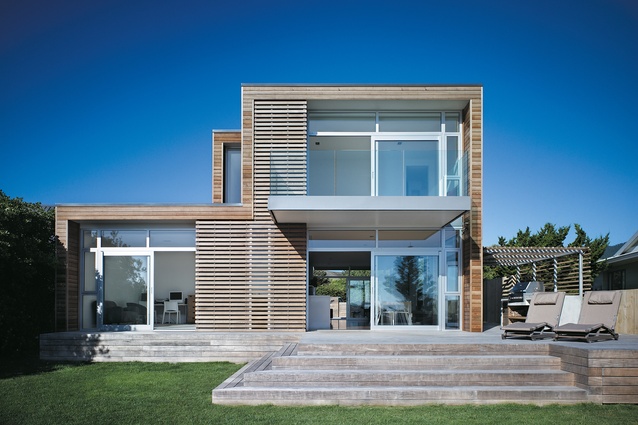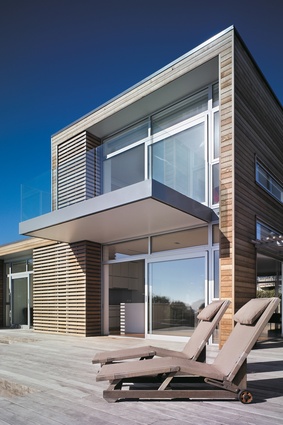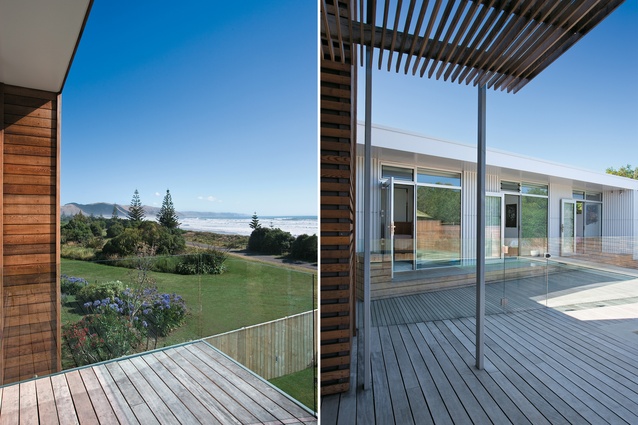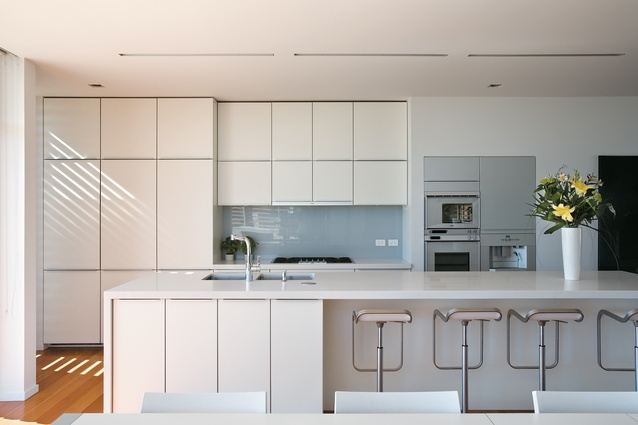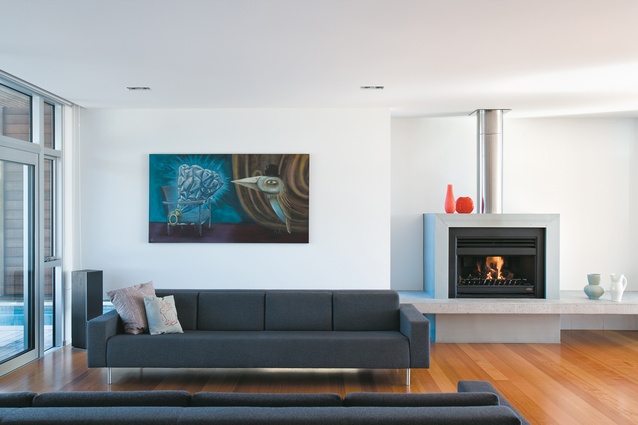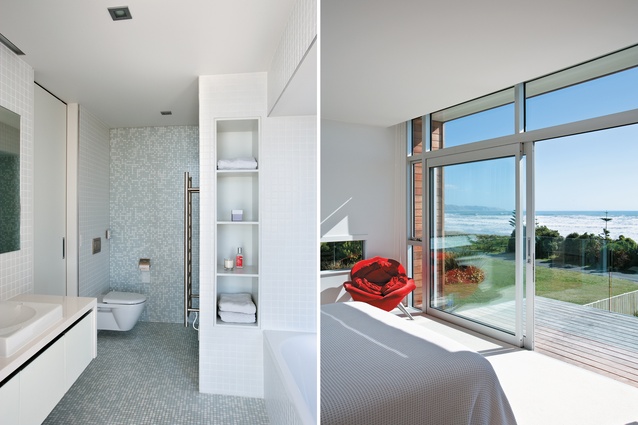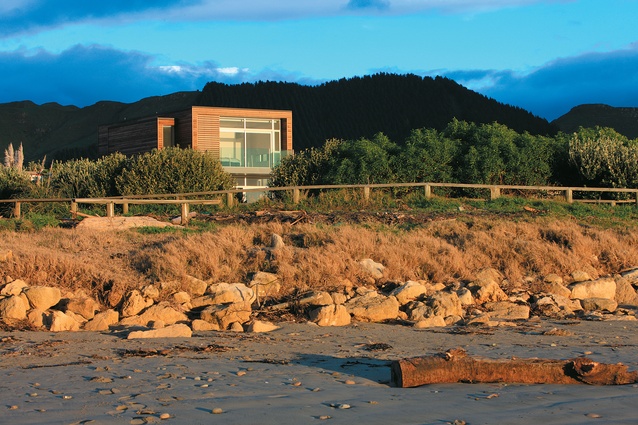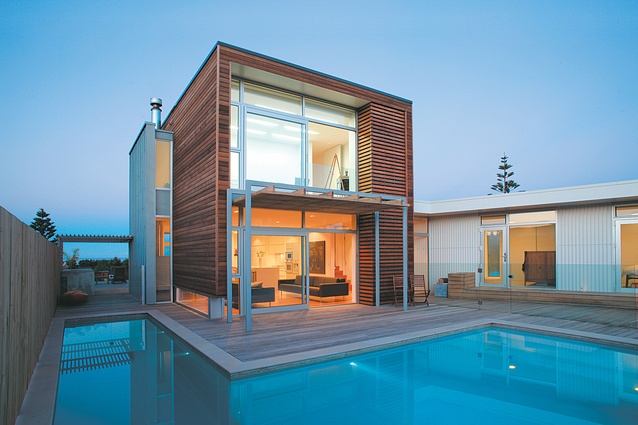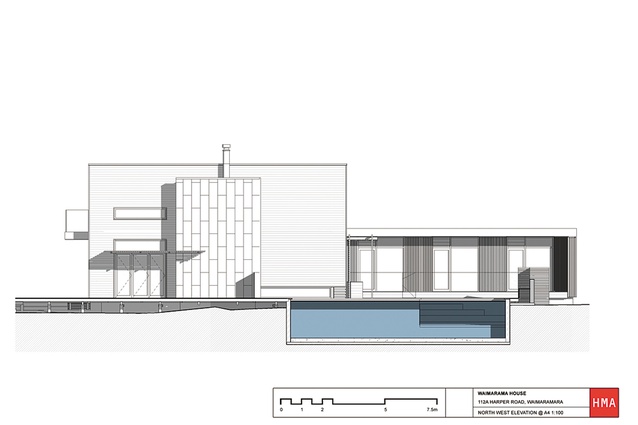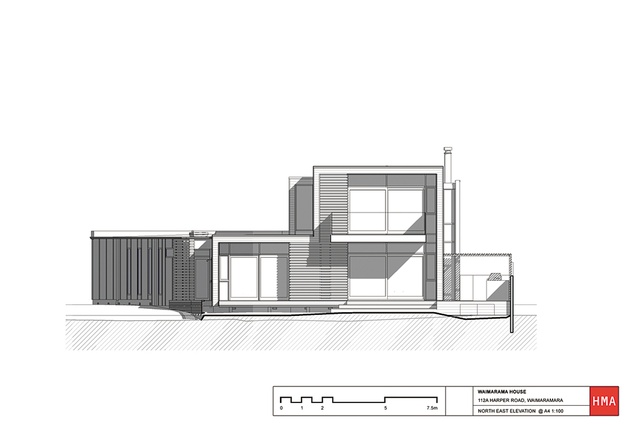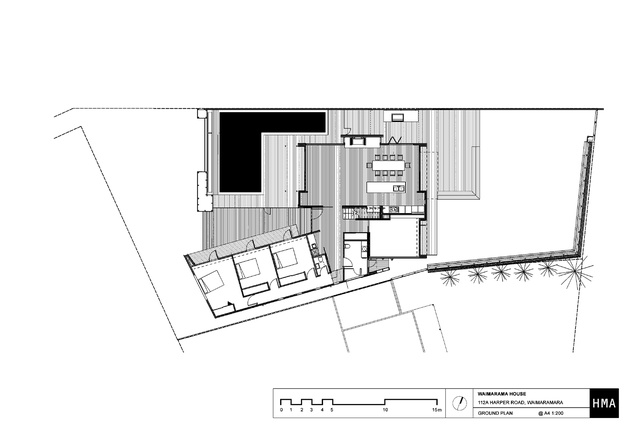Houses Revisited: Return of the native
First published in 2009, a Hawke's Bay home from Herriot Melhuish O'Neill expresses Waimarama’s changed circumstances and its continuity of spirit.
Waimarama is a small Hawkes Bay settlement that seems to have slipped down the coast from somewhere less comfortable. Northern Coromandel, perhaps, where the communards once roamed. The seaside village, 20 kilometres south of the gentry town of Havelock North – blonde bobs, Range Rovers and private boarding schools – went through a transformative episode four decades ago when it became the base for the Bruno Lawrence Electric Revelation and Traveling Apparition, the music and performance collective better known as Blerta. That happy, hairy time might be ancient history now, but it left a co-operative legacy that has survived the rise of coastal property development and the advent, in Waimarama, of Architecture.
The client for the house designed by John Melhuish is one of Waimarama’s longer-term residents, someone who has lived through the village’s transition from alternative retreat to settled community. Melhuish himself has some history at Waimarama – a Hawkes Bay boy, he spent many summers surfing at the beach. “I felt confident designing this house,” he says, “because I know this place.”
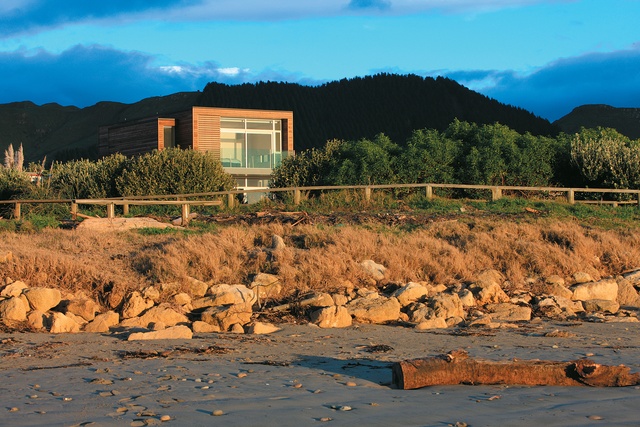
In fact, he says, “I think I’ve been in the house on the site that was demolished.” Local knowledge certainly helped the progress of a successful job but, the architect readily acknowledges, so did the persistence of his client. It’s not easy, anywhere in New Zealand, to navigate a coastal project through the consents process but in some provincial regions, it is especially difficult. Councils often appear to be ill-equipped to deal with planning applications; a lack of resource or expertise manifests itself as a reluctance to make decisions, let alone in a timely manner.
“There were quite lot of planning issues on this project,” Melhuish says. The pressure was on because the local council was about to change the district plan. Design had to be expeditious, Melhuish says, else the project could have become stranded in the no-man’s land between an existing building consent and a new resource consents regime. The local council had adopted – from another council – regulations for coastal dwellings. These new rules, prompted by the recognition of the environmental and financial costs of coastal erosion, and by the concomitant desire to reassign liability, stipulate that beach houses have to be relocatable at short notice (two weeks, at Waimarama).
Hence, Melhuish notes, lightweight construction and no concrete slabs with their passive solar heating capacity. Resource consent was conditional upon, among other factors, the obtaining of geo-technical advice on erosion and flood paths. All this process work might be just the precursor to design but it increasingly absorbs an architect’s time (and a client’s money). In modern construction, the building is just the tip of the project iceberg.
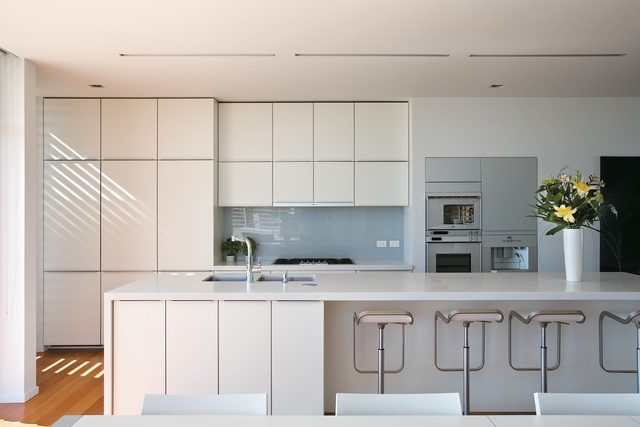
“The client wanted a slick, modernist house, but it still had to be a beach house,” Melhuish says. First, the existing house – “a gable thing with verandah attached” – had to go; the complication was that it shared a party wall with its neighbour. Part of the job, therefore, was repairing the newly-exposed side of the house next door. The client and therefore the architect wanted to make the most of the section, which is located at the end of a reserve, next to the beach. Garaging was forfeited to allow for greater site coverage, and the house was pushed up as well as out. “We had to go up to get all the view, out to Bare Island [Motu-o-kura] and north to Cape Kidnappers”, Melhuish says.
Although Hawkes Bay has a benign climate, Waimarama’s coastal environment is hard on materials. The architect specified cedar weatherboard and battened ply, and weathered zinc for the upper floor ‘pop out’. As you’d expect, the response of an experienced architect to the particularities of the local condition is evident in the house’s programme and detailing.
“In Hawkes Bay, especially on the coast, you want morning and afternoon spaces,” Melhuish says. Accordingly, the east (or beach) side of the house, with its broad, ‘popped out’ terrace, reads as a salute to the sun, while the west (and more private) side offers shelter from the heat and from the sea breezes that often blow in later in the day. The western prospect – and an interior life? – is not neglected: the upstairs studio looks inland to the hills behind Waimarama beach. Generally, Melhuish says, getting the sun into a building is not a problem in Hawkes Bay – the challenge is rather to achieve solar control. Hence this house’s deep eaves, and double glazing and, of course, there are solar panels on the roof (surely they should be de rigueur in sunny Hawkes Bay?).
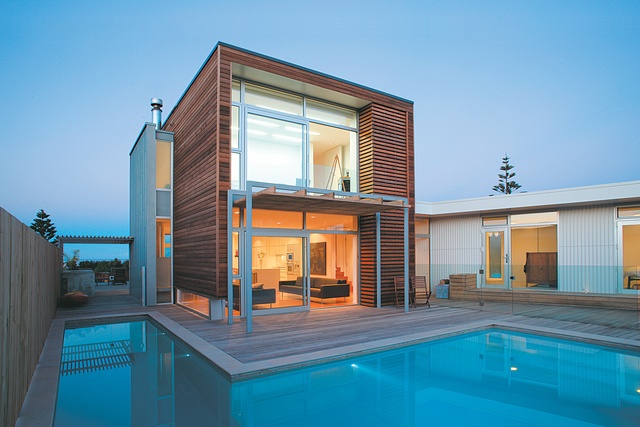
The single-storey bedroom wing is out back, behind the two-storey main structure – “almost like shearers’ quarters”, Melhuish says. In beach houses, the sleeping quarters are often designed as a separate pavilion, Melhuish notes, but this option was foreclosed by the client’s wish to have a swimming pool on the internal side of the section. (The block walls of the in-ground pool presumably can be dismantled and removed in the council-proscribed fortnight.)
“We tried to make the pool and the house as linked as possible, without making the pool too obtrusive,” Melhuish says. The main or street entry to the house is the route between the pool and the bedrooms – “We put in several risers to the bedroom wing to achieve some separation.” The line of approach to the front door is nicely continued by the internal staircase to the upper floor.
This is a home, Melhuish says, with a “living, working, breathing core”. It’s not a bach, he says, and it’s perhaps more accurately perceived as a house by the beach, rather than a beach house. Which seems perfectly proper: Waimarama may have changed quite a bit over the past 30 years, but not that much. It’s still a long way from Omaha.
Note: Since the time of writing, the design practice featured may have changed name, personnel or both.

